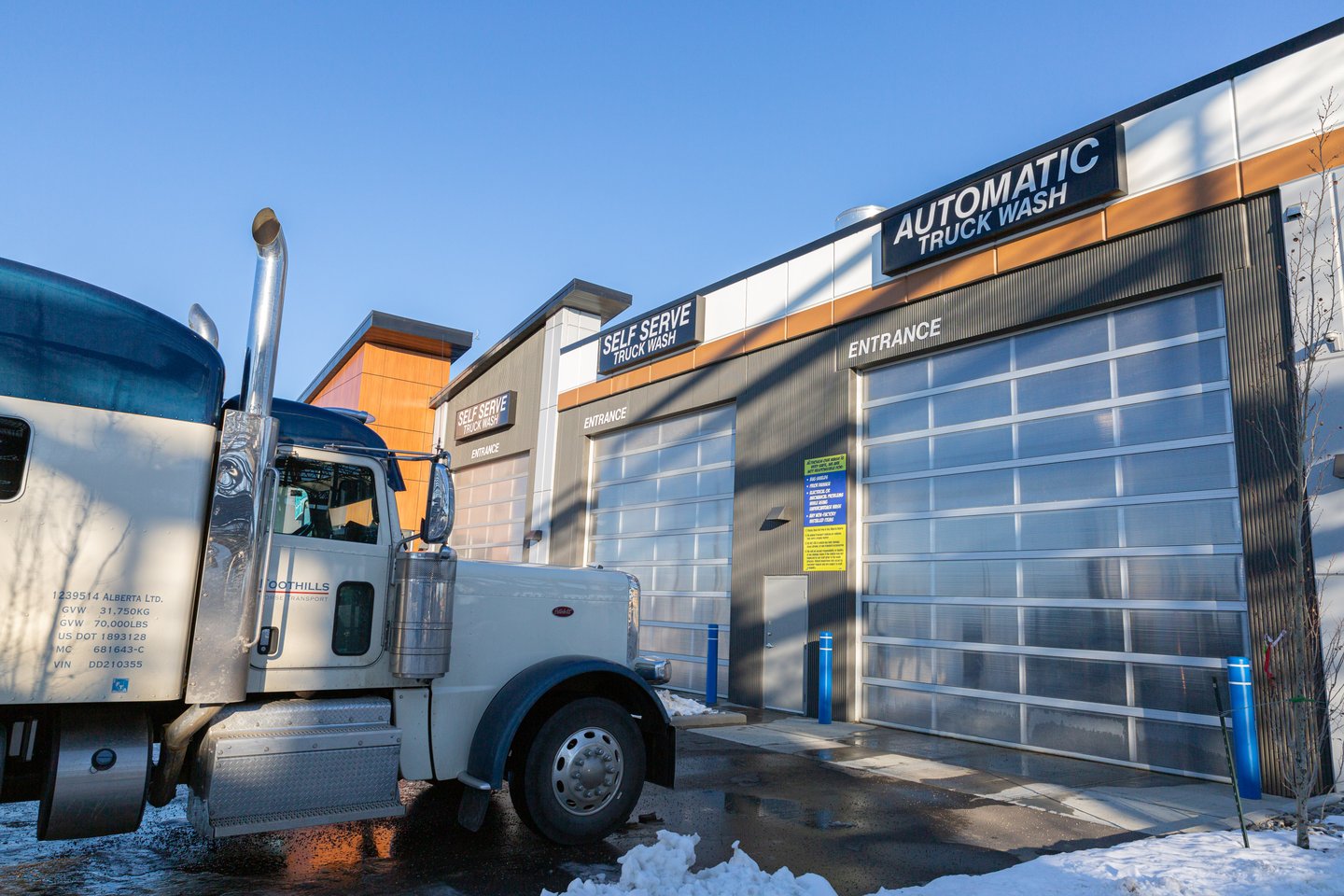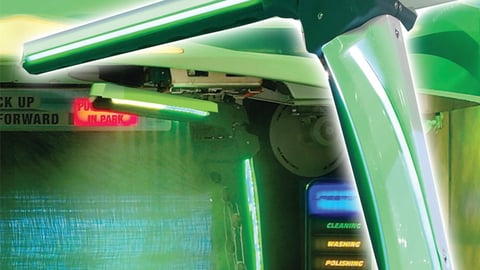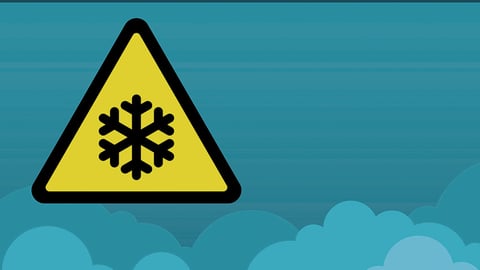Winterizing your car wash
As odd as it may sound to many, winter is one of the busiest times for a car wash operation.
It is during the winter months that drivers want to use the operations more frequently to remove snow and ice from their vehicles, and more importantly, to remove salt that if left on a vehicle will contribute to rust and damage critical components over time.
Just as winter is harsh on vehicles, it can be as harsh on the whole of the car wash operation as well. It is critical then that operators of car washes be prepared and take steps to get their operations in order and ready. well before the first snow comes and the temperatures begin to drop.
Start early
Think of a car wash operation much like the vehicles that go through it each day. Talk to any vehicle maintenance expert and all will tell an owner that the best time to prepare a vehicle for winter is to start early. You make sure your fluids are topped up, you have your winter tires on as the temperatures begin to fall consistently into the single digits and one needs to make sure all the vehicle’s mechanical systems have been inspected and if needed replaced if they show wear or damage. One does not wait for the first major snowstorm to hit or for temperatures to drop well below zero to do so, as one could find oneself stuck on the side of the road.
Michael Howe, general manager with the Mississauga, Ont.-based WashLinks says that one should in fact start preparing a car wash operation for winter in the summer. “We recommend that any improvements you want to make in the wash or any repairs or upgrades you want to make to your operations, you really want to try and do them during the summer months when your volumes are less, and people do not get as upset in the summer if they cannot get their car washed right away.”
Matt Verity, consultant principal of the Calgary-based Car Wash & Self Storage, says that all car wash operations should create a comprehensive plan for preparing for winter, one that is “all encompassing, from equipment checklists to the training of staff…and when you are dealing with colder climates like Canada’s, especially in Central Canada, you should start to plan for and prepare in September, no later than October.”
What one wants to avoid at all costs, according to Howe, is to discover a problem during the winter months, a problem that may necessitate having to shut down your operation during what is one of the busiest and profitable times of the year. “You need to focus all your efforts on checking your equipment, making any improvements to them or adding any new equipment or features to your operations – such as adding or replacing an important piece of equipment – in those summer months, not during winter.”
Jayson Sevilla, site manager for Alberta-based ClearWater Car Wash, says that like all well-prepared car wash operations, his operation has a comprehensive checklist that staff will follow to prepare for winter. He adds that because of their location and the severe winters that happen, management and staff do not wait for to prepare. In fact, staff will inspect equipment daily and weekly to ensure everything is working correctly, along with doing the major winterization checks before temperatures fall and snow arrives.
What to inspect
Verity says that what is critical when preparing your winter checklist and your inspection regiment is to remember to focus on vulnerabilities that cold weather can exploit. One needs to focus on making sure to keep the cold out and keeping heat inside the facility. That will include:
1. Checking power and air systems to ensure they are operating properly.
2. Inspecting and lubricating all necessary components to keep them from seizing up during cold weather.
3. Preventing compressor damage by draining it before winter arrives.
4. Inspecting, testing and fixing heating systems.
5. Checking and replacing any worn or damaged weather stripping to both prevent cold from entering the washing bay or tunnel and to keep heat inside.
After that one should take a close look at the sprayers, brushes, hoses and other mechanicals. It is best to do this in the summer months and repair or replace anything that is worn or damaged.
Tim Walker, president and founding partner with Soapy Brushy in Hamilton, Ont., also recommends inspecting all electricals and connections to ensure they are in good working order.
Verity adds that when checking those wiring and hose connections and brushes “that you make sure that you are looking at them not when they are in their ‘home’ positions, but when they are at their furthest points because that is when they are going to be pulling on your electricals the most and on your hoses as well.”
To prevent your hoses or pipes carrying fluid from freezing or bursting during the cold of winter, one should consider such measures as:
1. Insulating pipes, pumps and other vulnerable components.
2. Installing freeze-resistant hosing seals that can withstand low and freezing temperatures.
3. Installing radiant or heat tracing systems in critical areas of the wash operations to ensure a consistent temperature is maintained and to protect equipment.
Travis Braithwaite, chief operating officer with ClearWater Car Wash, adds during the winter months it is important as well to keep an eye out for any potential problems that can happen during the car wash while it operates. He says it is important to have someone do regular checks on the systems to make sure everything is working correctly. This is especially important with self-service car wash operations, such as ones that operate at gas stations.
“Gas station car washes are often unattended,” he says. “You have someone in the office dealing with the convenience side of the business and the car wash is sometimes not within eyeshot of that person. What that means is that if there is a breakdown anywhere, say in the tunnel or in the equipment room, they will not know about it until a customer comes and tells them. So, when you are running your operations, you as a manager and your staff should be walking the site and operations often to catch anything that may have ‘gone off the rails.’”
Not doing so could mean you coming to your operation in the morning and discovering a system frozen in ice.
Everyone who OCTANE spoke with said one of the most critical, and sometimes overlooked, systems in a car wash are the doors. The doors at the entrance and exit need to be regularly inspected and maintained throughout the year, and well before winter to replace any worn parts so that they operate smoothly in winter. Most especially, one needs to make sure that the exit door is operating correctly, firstly to check that the mechanism to raise and lower it is timed correctly so that it minimizes the amount of cold air getting into the wash operation and minimizes heat loss. Another to make sure the door does not freeze to the ground.
“That is a typical problem one encounters in winter,” says Braithwaite. “Obviously, you are using lots of water and so the ground gets very wet. What happens is that when you close your roll-up doors at night, they are touching the ground, and that ground is wet so of course that water freezes overnight and the next morning you may find you cannot get your doors to open.”
All recommended working with your door supplier to have them come in and inspect all the door systems to make sure everything is ready for winter.
Preparing staff for winter
Just as it is important to get your car wash operation ready for winter, it is just as important to get the staff prepared as well. It can mean emphasizing to them to keep all walkways and customer entrances and exits clear of snow and properly sanded to prevent slipping. Just as important is keeping staff safe, especially those who are outside guiding and preparing vehicles entering the car wash. It is crucial that they wear proper clothing to keep them warm and dry, for example, wearing an insulated coat or jacket that is water resistant, wearing insulated gloves and hats and wearing proper boots that will keep them warm and dry and keeping their work areas free of anything that might cause them to slip.
As well, it is important to rotate staff as well, bringing inside the teams who are working outside to prepare and guide vehicles into the wash bays or tunnel to rest and warm up before heading outside once more. Our experts note that individual provinces provide guidelines for how to protect people working in the cold and those should be reviewed by management and staff.
So, a little preparation and training will go a long way to having a well-operating car wash operation and a safe staff over the winter months.






